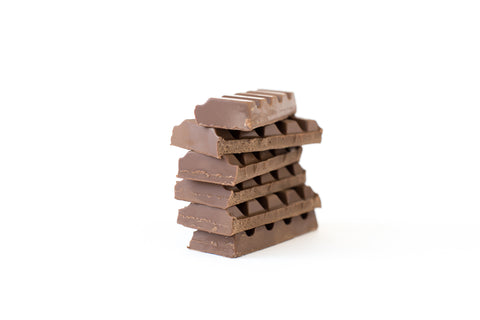History of Chocolate

The story of chocolate, as far back as we know it, begins with the discovery of America. Until 1492, the Old World knew nothing at all about the delicious and stimulating flavor that was to become the favorite of millions.
The Court of King Ferdinand and Queen Isabella got it’s first look at the principal ingredient of chocolate when Columbus returned in triumph from America and laid before the Spanish throne a treasure trove of many strange and wonderful things.
Among these were a few dark brown beans that looked like almonds and seemed most unpromising.

They were cocoa beans, today’s source of all our chocolate and cocoa.
The king and queen never dreamed how important cocoa beans could be, and it remained for Hernando Cortez, the great Spanish explorer, to grasp the commercial possibilities of the New World offerings.

Food of the Gods
During his conquest of Mexico, Cortez found the Aztec Indians using cocoa beans in the preparation of the royal drink of the realm, “chocolatl,” meaning warm liquid.

In 1519, Emperor Montezuma, who reportedly drank 50 or more portions daily, served chocolatl to his Spanish guest in great golden goblets, treating it like a food for the gods.
For all its regal importance, however, Montezuma’s chocolatl was very bitter, and the Spaniards did not find it to their taste. To make the concoction more agreeable to Europeans, Cortez and his countrymen conceived of the idea of sweetening it with cane sugar.
While they took chocolatl back to Spain, the idea found favor and the drink underwent several more change with newly discovered spices, such as cinnamon and vanilla.

Ultimately, someone decided the drink would taste better if served hot. The new drink won friends, especially among the Spanish aristocracy. Spain wisely proceeded to plant cocoa in its overseas colonies, which gave birth to a very profitable business.
Remarkably enough, the Spanish succeeded in keeping the art of the coca industry a secret from the rest of Europe for nearly a hundred years.
Chocolate Spreads to Europe
Spanish monks, who had been consigned to process the cocoa beans finally let the secret out. It did not take long before chocolate was acclaimed throughout Europe as a delicious, health-giving food.
For a while it reigned as the drink at the fashionable Court of France. Chocolate drinking spread across the Channel to Great Britain, and in 1657 the first of many famous English chocolate houses appeared.
The hand methods of manufacture used by small shops gave way in time to the mass production of chocolate. The transition as hastened by the advent of a perfected steam engine which mechanized the cocoa grinding process.
By 1730, chocolate had dropped in price from three dollars or more per pound to within the financial reach of all.
The invention of the cocoa press in 1828 reduced the prices even further and helped to improve the quality of the beverage by squeezing out part of the cocoa butter, the fat that occurs naturally in cocoa beans.
From then on, drinking chocolate had more of the smooth consistency and pleasing flavor it has today.
The 19th Century marked two more revolutionary developments in the history of chocolate. In 1847, an English company introduced solid “eating chocolate.”
Through the development of fondant chocolate, a smooth and velvety variety that has almost completely replaced the old coarse grained chocolate which formerly dominated the world market.

The second development occurred in 1876 in Vevey, Switzerland, when Daniel Peterson devised a way of adding milk to the chocolate, creating the product we enjoy today known as milk chocolate.
Chocolate Comes To America
In the United States of America, the production of chocolate proceeded at a faster pace than anywhere else in the world.
It was in the pre-revolutionary New England—1765, to be exact—that the first chocolate factory was established.
Chocolate has gained so much importance since that time, any interruption in its supply would be keenly felt.
During World War II, the U.S. government recognizing chocolate’s role in the nourishment and group spirit of the Allied Armed Forces, so much so that it allocated valuable shipping space for the importation of cocoa beans.

Many soldiers were thankful for the pocket chocolate bars which gave the strength to carry on until more food ration could be obtained.
Today, the U.S. Army D-rations include three 4-ounce chocolate bars. Chocolate has even been taken into space as part of the diet of U.S. astronauts.
